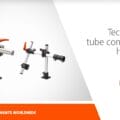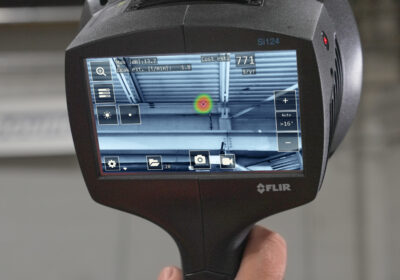Leading photo-chemical etching (PCE) innovator, micrometal Group, is excited to announce that it will be exhibiting at the upcoming Stanztec exhibition 25-27 June in Pforzheim. Stanztec focuses on current topics covering all aspects of stamping and forming technology, and attracts technology leaders which showcase innovations from the fields of toolmaking, stamping, and peripherals for the production of highly specialised precision products.
The micrometal Group (Hall KS – Stand D11) is a world leader in PCE, and specialises in sheet and reel-to-reel PCE processes achieving the most exacting tolerances possible in precision metal part and component manufacturing. As such, it will be attending Stanztec to offer a solution to visitors when stamping is unable to meet application demands.
Jochen Kern, Head of Sales & Marketing at micrometal Group says, “PCE excels over traditional stamping methods when producing ultra-precise flat metal components, particularly in scenarios requiring high accuracy and complexity. The key advantage of PCE lies in its ability to maintain the integrity of the metal, as it does not involve mechanical force or heat, which can deform or induce stress in the material. This aspect is crucial when working with very thin metals or designs requiring very fine features and tight tolerances, which are challenging for stamping.”
Stamping uses dies and high force to cut or shape the metal. While efficient for larger runs and simpler shapes, stamping struggles with complex, delicate designs or very small components. The mechanical pressure can distort the metal, particularly when working with thin materials or intricate patterns. Additionally, the cost and time involved in creating and maintaining dies make stamping less economical and flexible for low-volume or highly detailed projects. This makes PCE a superior choice for applications demanding precision, complexity, and material integrity in metal component fabrication.

Kern continues, “PCE’s use of digital or glass tooling in manufacturing ultra-precise thin metal parts offers significant advantages over traditional stamping, primarily due to its flexibility, precision, and cost-effectiveness. Digital tooling allows for rapid design changes and complex, detailed pattern creation without the need for physical die construction, thereby reducing lead times and production costs. This tooling method supports extremely accurate and consistent reproduction of intricate features, which is crucial for thin metal parts that may be prone to distortion under the mechanical stress of stamping processes.”
The micrometal Group is able to produce intricate parts with tolerances as low as ± 7 microns depending upon material and its thickness, this tolerance attainment being unique among all alternative metal fabrication technologies. The company can also achieve extremely small feature sizes of 25 microns, a minimum hole diameter 80% of the material thickness, and single digit micron tolerances repeatably.
Kern concludes, “Working with the micrometal Group customers can access high volume ultra-precise reel-to-reel stainless steel PCE, enhanced traditional sheet based PCE for a wide variety of sheet thicknesses in a broad range of metals, and a number of allied and complementary technologies. This means the micrometal Group offers a globally unique range of PCE services for its customers, and is able to provide a truly scalable service with a focus on quality, process efficiency, and automation. We invite all visitors at Stanztec to come and visit us on stand D11 in Hall KS to discuss how we can work with you as a product development partner to push the boundaries of what is possible in precision metal fabrication.”







